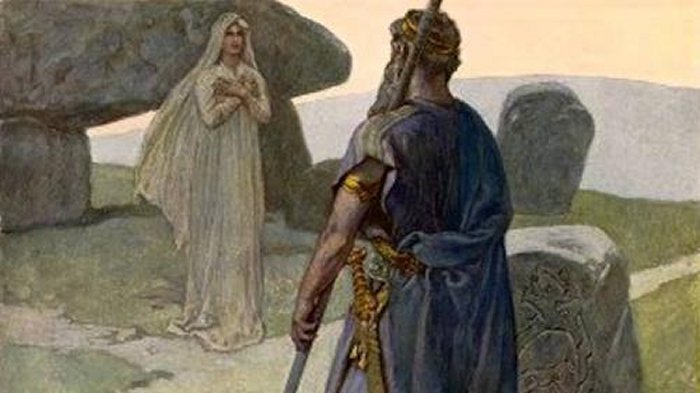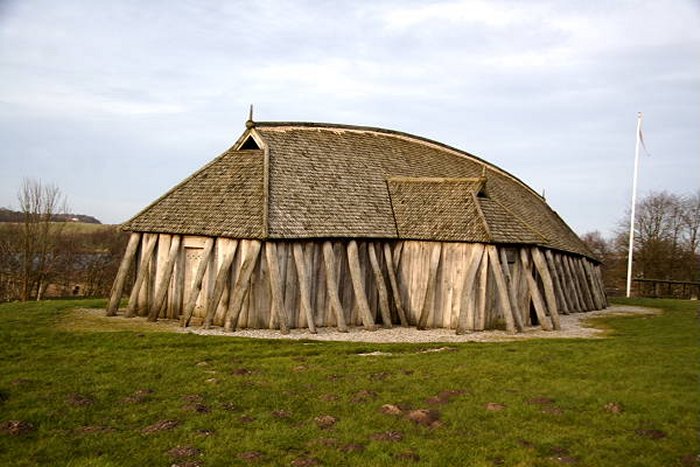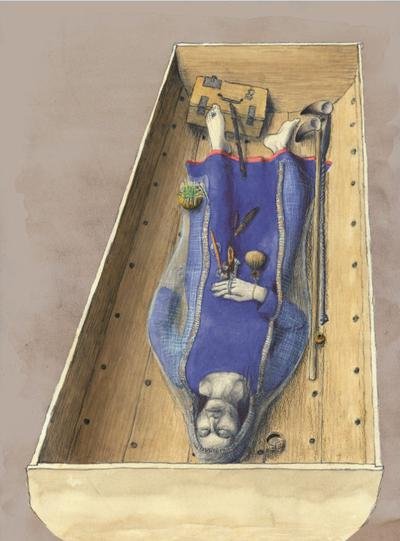Mysterious Ancient Grave With Unusual Artifacts That Belonged To A Völva – Norse Female Shamans Did Exist
Ellen Lloyd - AncientPages.com - A Völva in Norse mythology was someone everyone feared, even the gods. She was a powerful female shaman and seer, but was she only a mythological figure, or was there any proof of her existence?
Sometimes very unusual archaeological finds are made, giving us reason to ponder whether some of our ancestors’ stories are not based on actual events.
A very mysterious grave was discovered in Denmark. Several puzzling ancient artifacts were found in the tomb, indicating whoever was buried there was no ordinary person. What is especially interesting about this particular discovery is that it seems this was the resting place of a Völva.
While excavating near the Fyrkat Viking fortress, archaeologists found about 30 Viking Age graves, but one was more unusual.
A Viking-Age Woman Who Held High Status
Scientists found a woman dressed in fine blue and red clothes inside the tomb adorned with gold thread. Her clothes showed she was important and most likely held royal status. She had been given ordinary female gifts, like spindle whorls and scissors.
Reconstruction of Fyrkat Viking fortress. Image credit: Malene Thyssen - CC BY-SA 3.0
Being a rich woman, she was buried in the body of a horse-drawn carriage.
The grave contained exotic goods from foreign countries, something only rich people could afford at the time. Her toe rings were made of silver, which has not been found elsewhere in Scandinavia. Among her burial goods were two bronze bowls, which may have come from Central Asia.
Unusual Metal Wand And Poisonous Plants
It would be easy to say this was “only” a rich Viking woman, but some objects inside the grave suggest she was a Norse shaman.
The buried seeress from Fyrkat – reconstruction drawing by Thomas Hjejle Bredsdorff. Image credit: National Museum of Denmark
Scientists discovered an intriguing metal wand and seeds from the poisonous henbane plant inside her tomb.
These two particular accessories are associated with a Norse shaman because the name Völva (vǫlva) is Old Norse and means “wand carrier” or “carrier of a magic staff.” In Norse Sagas, a Völva is often described as an older woman who appears late at night. She is dressed in a dark foot-length cloak and holds a magical staff.
The metal wand in the grave had disintegrated after all those years, but experts could determine it was an iron stick with bronze fittings.
Left: A mysterious small cup, which the woman from Fyrkat also had with her in the grave. Its function is not known, but it may have been a small drinking cup. Right: Bronze cup, possibly originating from Central Asia. It had a grass cover and contained a fatty substance. Image credit: National Museum of Denmark
Inside a small purse, there were henbane seeds. During the Viking Age, such seeds were thrown by shamans into a fire because the plants were known to produce mildly hallucinogenic smoke and euphoric states.
Henbane was often used by the witches of later periods. It could be used as a “witch’s salve” to produce a psychedelic effect if the magic practitioners rubbed it into their skin.
Why was the woman buried with such plants unless she used them?
The Viking seeress’s cooking spit. The spit was already slightly bent when it was placed in the burial. Image credit: National Museum of Denmark
White lead was sometimes used as an ingredient in skin ointment in her belt buckle.
Scientists also discovered other mysterious artifacts that support the theory the woman inside the Fyrkat grave was a Völva.
At her feet was a box containing various items, such as owl pellets and small bird and mammal bones. Apart from these was a silver amulet shaped like a magic chair.
A so-called box brooch from Gotland was found in the grave. The völva re-used the hollow brooch as a container for “white lead.” White lead is a white dye that has been used in medicine for more than 2000 years - in skin ointments, for example. It is poisonous in its concentrated form. Image credit: National Museum of Denmark
We may never know the woman’s identity, but her burial goods show she was not a Viking warrior but a Völva. A Völva was a very respected woman, and warriors often visited her before going into battle. Her Poisonous plants could have been used before an important fight to give Viking warriors strength and courage.
It is, without a doubt, a fascinating archaeological discovery that gives a unique glimpse into our ancestor’s beliefs and shows some Norse myths were undoubtedly based on actual events and people.
Written by Ellen Lloyd – AncientPages.com
Updated on April 1, 2023
Copyright © AncientPages.com All rights reserved. This material may not be published, broadcast, rewritten or redistributed in whole or part without the express written permission of AncientPages.com
More From Ancient Pages
-
 The Wild Hunt And The Danger Of Seeing The Phantom Army Of Odin
Featured Stories | Dec 8, 2024
The Wild Hunt And The Danger Of Seeing The Phantom Army Of Odin
Featured Stories | Dec 8, 2024 -
 Odin: Norse God Of War And Magic – Most Complex Figure Of The Norse Pantheon
Myths & Legends | Oct 27, 2016
Odin: Norse God Of War And Magic – Most Complex Figure Of The Norse Pantheon
Myths & Legends | Oct 27, 2016 -
 Ancient Mystery Of The Before – Time People – Traces Of An Unknown Lost Race – Part 1
Ancient Mysteries | Apr 3, 2019
Ancient Mystery Of The Before – Time People – Traces Of An Unknown Lost Race – Part 1
Ancient Mysteries | Apr 3, 2019 -
 India’s Tradition Of Advanced Metallurgy, Craftsmen And Blacksmiths Is Longer Than Thought
Ancient Technology | Mar 19, 2019
India’s Tradition Of Advanced Metallurgy, Craftsmen And Blacksmiths Is Longer Than Thought
Ancient Technology | Mar 19, 2019 -
 The Untold Story Of The Inca – Fire In The Sky – Part 1
Ancient Mysteries | Jul 2, 2019
The Untold Story Of The Inca – Fire In The Sky – Part 1
Ancient Mysteries | Jul 2, 2019 -
 ‘Something’ Ancient And Strange Was Found Hidden Inside A Huge Underground Structure – What Happened Next Is A Mystery
Ancient Mysteries | Nov 8, 2023
‘Something’ Ancient And Strange Was Found Hidden Inside A Huge Underground Structure – What Happened Next Is A Mystery
Ancient Mysteries | Nov 8, 2023 -
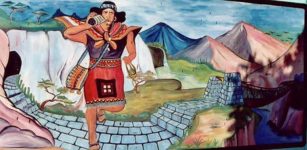 Inca Communication: Mailmen Of The Inca Empire Were Fast Roadrunners
Ancient History Facts | Mar 20, 2016
Inca Communication: Mailmen Of The Inca Empire Were Fast Roadrunners
Ancient History Facts | Mar 20, 2016 -
 Unas (Unis): First Pharaoh Who Decorated His Burial Chamber With Pyramid Texts
Featured Stories | Jun 3, 2021
Unas (Unis): First Pharaoh Who Decorated His Burial Chamber With Pyramid Texts
Featured Stories | Jun 3, 2021 -
 Extraordinary Discovery Of First Viking Tower In Viborg, Denmark Re-Writes Viking History
Archaeology | Jan 30, 2017
Extraordinary Discovery Of First Viking Tower In Viborg, Denmark Re-Writes Viking History
Archaeology | Jan 30, 2017 -
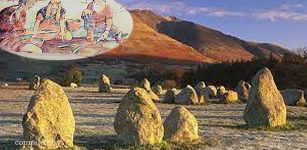 Castlerigg Stone Circle: One Of Britain’s Most Important And Earliest Stone Circles
Featured Stories | Apr 16, 2019
Castlerigg Stone Circle: One Of Britain’s Most Important And Earliest Stone Circles
Featured Stories | Apr 16, 2019 -
 Bizarre Case Of A Mysterious Dark Figure’s Inhuman Behavior At Cemeteries – No One Understood What Happened
Featured Stories | Dec 1, 2024
Bizarre Case Of A Mysterious Dark Figure’s Inhuman Behavior At Cemeteries – No One Understood What Happened
Featured Stories | Dec 1, 2024 -
 Golden Stool Of Ashanti People And Legend Of The Black Cloud Appearing In The Sky
Artifacts | Sep 27, 2020
Golden Stool Of Ashanti People And Legend Of The Black Cloud Appearing In The Sky
Artifacts | Sep 27, 2020 -
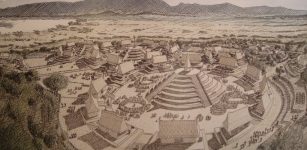 Circular Stepped Pyramids Of Guachimontones And Teuchitlan Tradition – A Lost Ancient World In Mexico
Civilizations | Mar 13, 2016
Circular Stepped Pyramids Of Guachimontones And Teuchitlan Tradition – A Lost Ancient World In Mexico
Civilizations | Mar 13, 2016 -
 Viking Cemetery In Lutomiersk And DNA May Solve The Mystery Of Norse Warriors In Central Poland
Vikings | Jan 7, 2025
Viking Cemetery In Lutomiersk And DNA May Solve The Mystery Of Norse Warriors In Central Poland
Vikings | Jan 7, 2025 -
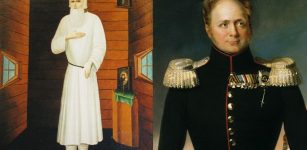 Mystery Of Feodor Kuzmich – Did Tsar Alexander I Fake His Death?
Featured Stories | Mar 23, 2020
Mystery Of Feodor Kuzmich – Did Tsar Alexander I Fake His Death?
Featured Stories | Mar 23, 2020 -
 Large Ancient Statues And Artifact With Foreign Inscription Found In A Swamp In Michigan
Featured Stories | Oct 13, 2024
Large Ancient Statues And Artifact With Foreign Inscription Found In A Swamp In Michigan
Featured Stories | Oct 13, 2024 -
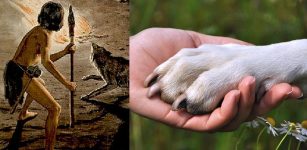 26,000-Year-Old Footprints In Chauvet Cave: Oldest Evidence Of Human-Canine Relationship
Featured Stories | Dec 29, 2016
26,000-Year-Old Footprints In Chauvet Cave: Oldest Evidence Of Human-Canine Relationship
Featured Stories | Dec 29, 2016 -
 Is There An Over-Looked Ancient Secret In Sahara?- Intriguing Theory Examined
Ancient Mysteries | Jul 30, 2019
Is There An Over-Looked Ancient Secret In Sahara?- Intriguing Theory Examined
Ancient Mysteries | Jul 30, 2019 -
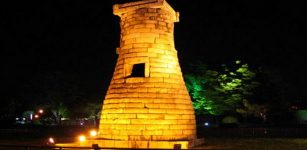 Cheomseongdae “Star-Gazing Tower” Is The Oldest Observatory In East Asia
Featured Stories | Mar 31, 2021
Cheomseongdae “Star-Gazing Tower” Is The Oldest Observatory In East Asia
Featured Stories | Mar 31, 2021 -
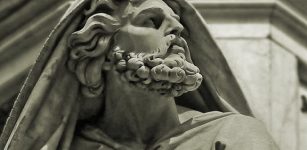 Isaiah: Prophet Who Predicted The Coming Of Jesus Christ To Salvage Mankind From Sin
Biblical Mysteries | Apr 4, 2019
Isaiah: Prophet Who Predicted The Coming Of Jesus Christ To Salvage Mankind From Sin
Biblical Mysteries | Apr 4, 2019

